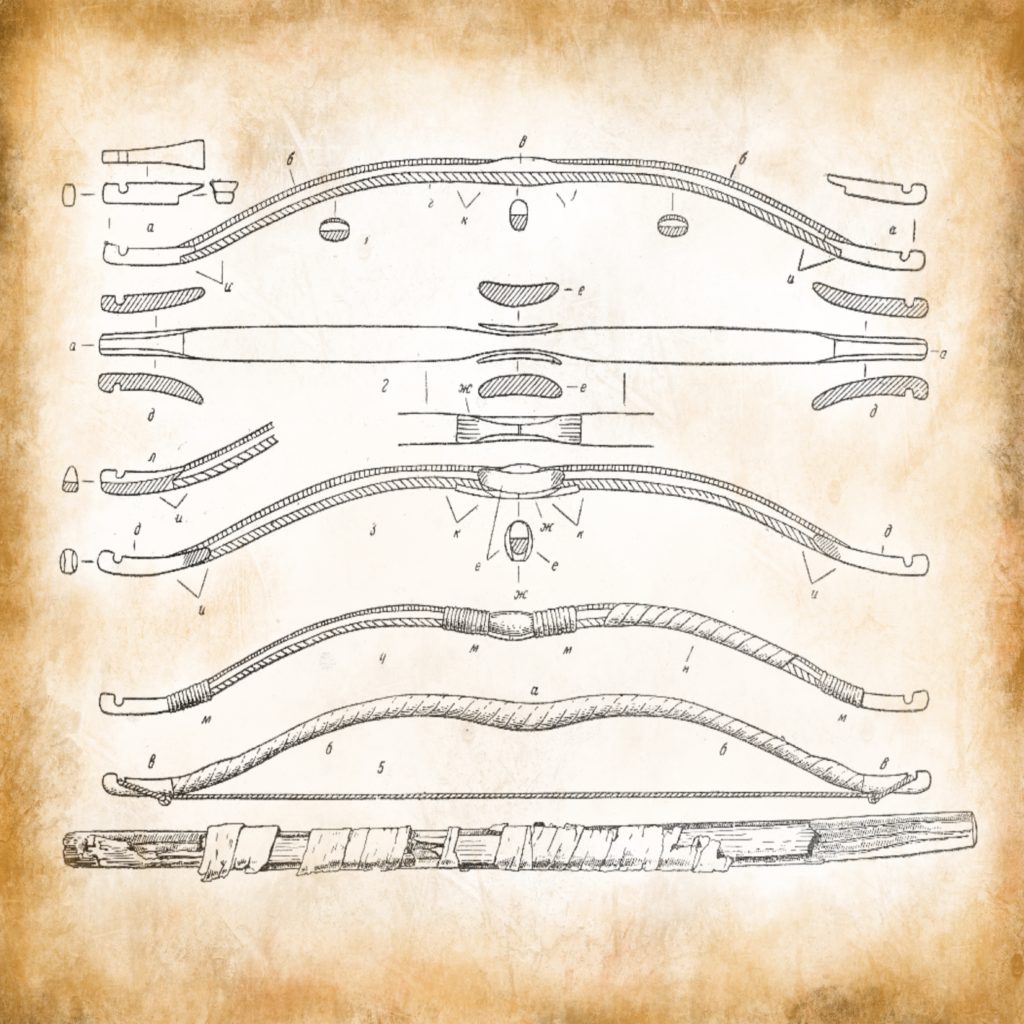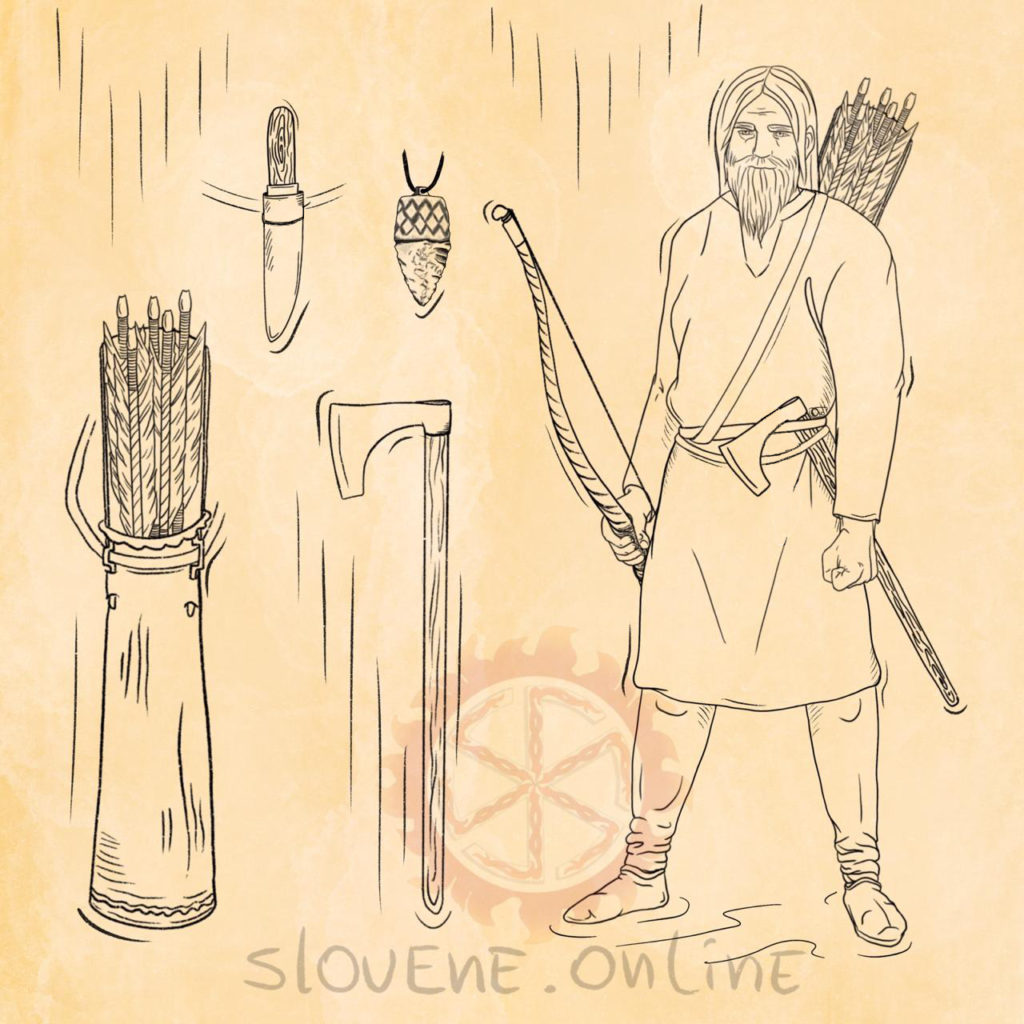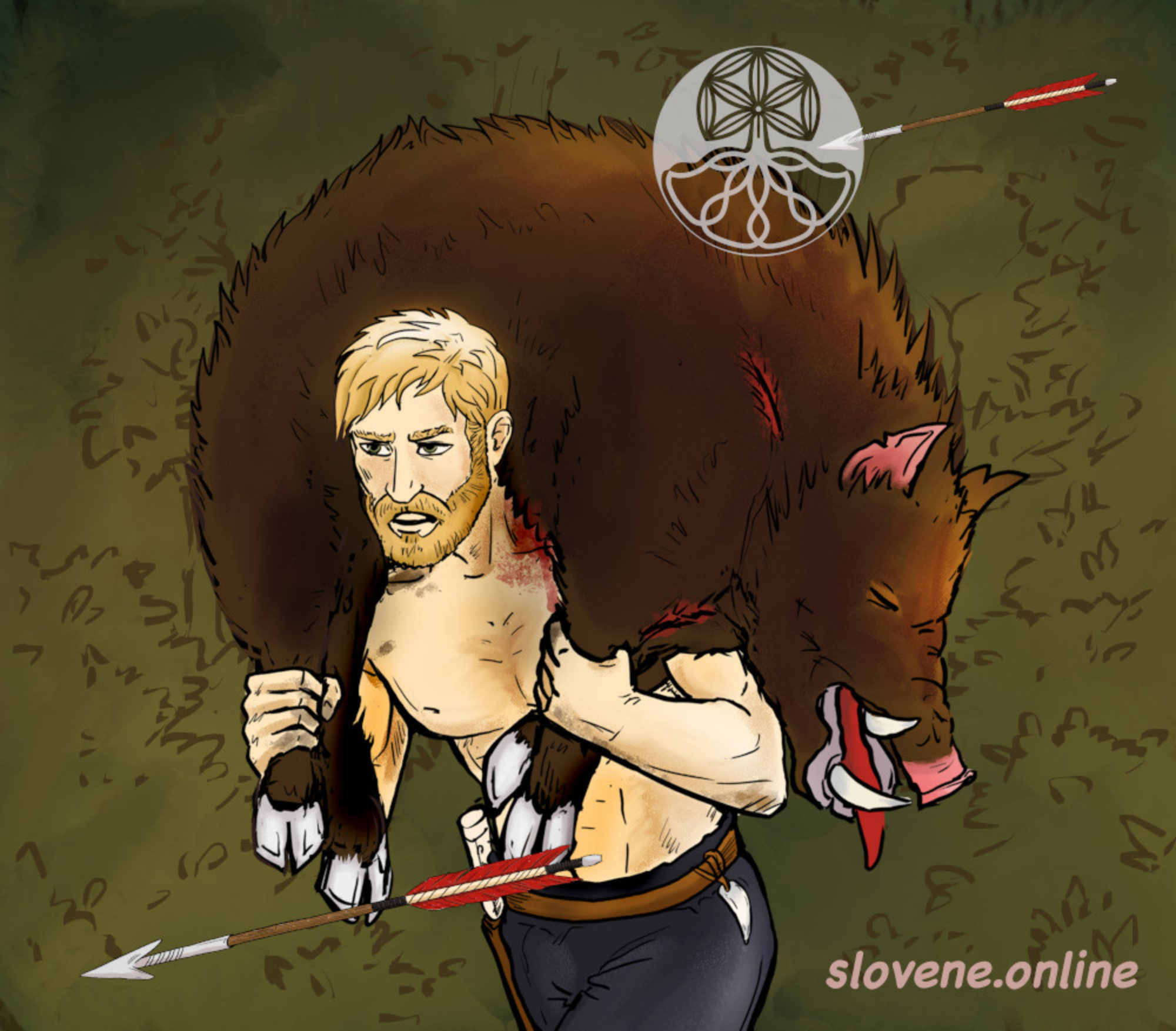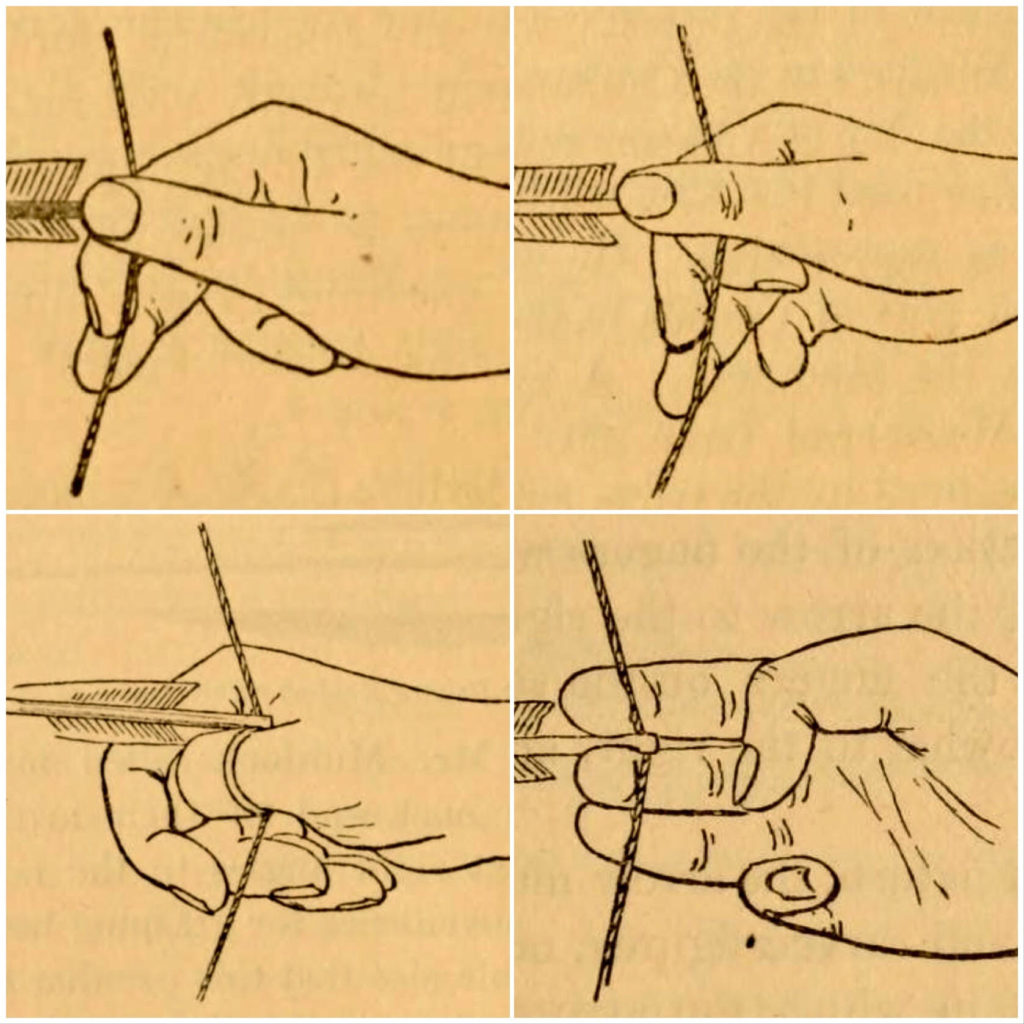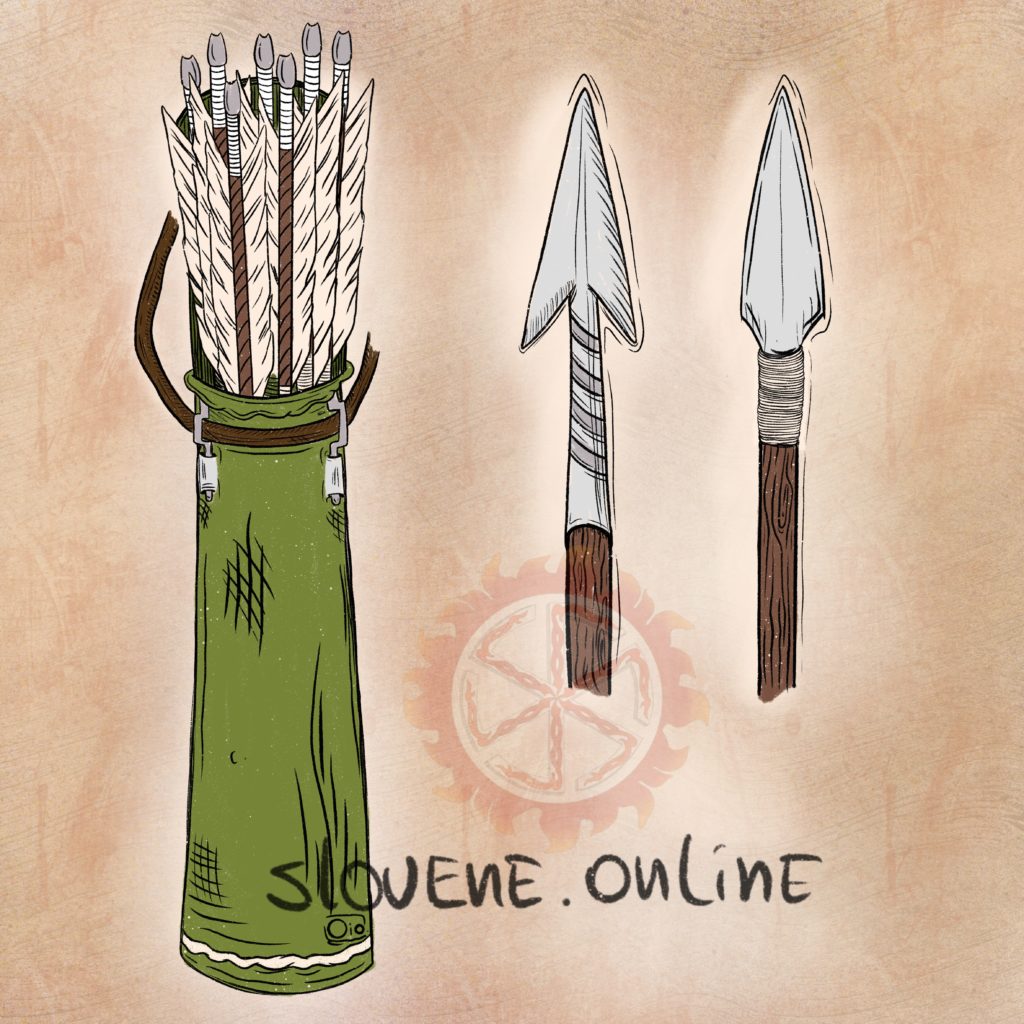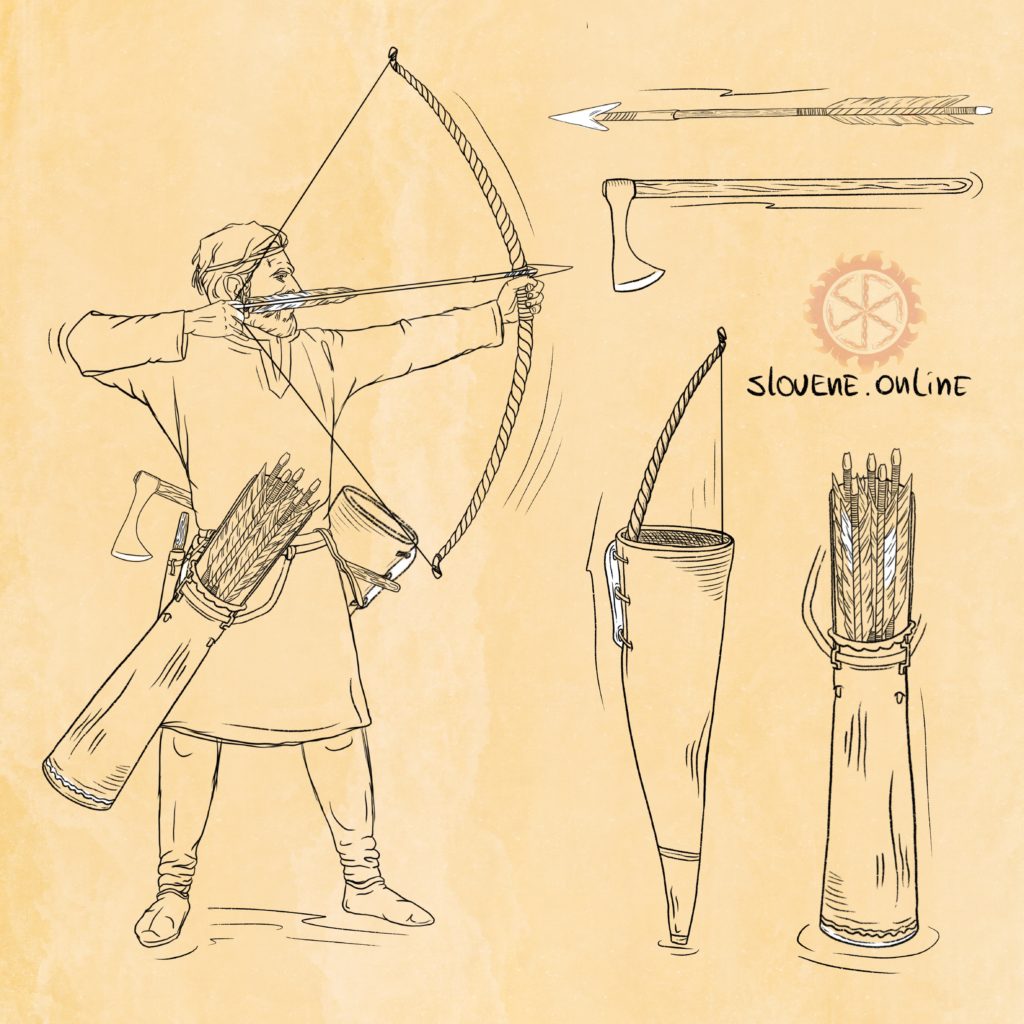Our Slavic ancestors used composite bows for hunting and warfare, which with a bowstring attached resembled a smoothed “M” letter. Archeologists associate the appearance of composite bows with Scythians in the 1st millennium BC, after which these bows quickly spread throughout Eastern Europe and were used until the late Middle Ages. The lethal force of the Slavic composite bows was enormous – for example, an arrow fired from them could pierce an armor of the German knights, which was recorded in historical documents. The tension force of such bows (40-80 kg) was twice and four times more than that of their ancient counterparts from Western Europe, as well as modern sports bows.
Composite bows, as in this image, were glued from two types of wood (for example, juniper and birch), strengthened by tendons (elk, deer, etc.) and glued over with birch bark using special fish glue. The handle and ends of the bow often had bone plates lining.
The bowstring for such powerful bows also had special requirements. It had to be strong, do not stretch, swell or shrink in any weather conditions. Therefore, they were usually made by combining various materials – for example, from a twisted rawhide leather with a twist of silk or hemp threads.
Until the XVII century, bow and arrow had significant advantages over handheld firearms. For example, a good archer could fire up to 12 arrows per minute, while firearms did not yet have such rate of fire.
